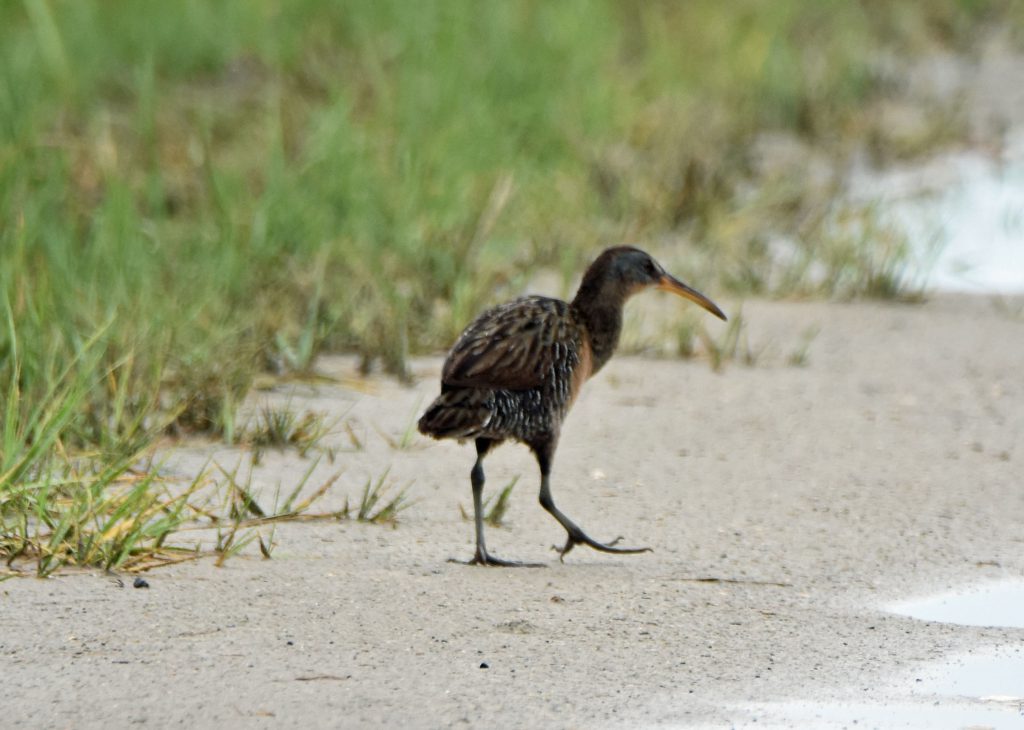
The clapper rail (Rallus longirostris) is a medium-sized bird found in marshes, salt marshes, and mangrove swamps along the coasts of the eastern and western United States, Mexico, and Central America. This secretive bird is about 13-16 inches in length and weighs between 7-13 ounces, with males slightly larger than females. The clapper rail has a long, slightly curved bill, a short tail, and long legs.
The clapper rail has distinctive field marks, including a gray-brown back, a rust-colored breast, and a white belly. Its wings are short and rounded, and it has a short, rounded tail. The clapper rail’s face is gray with a dark mask across its eyes, and its bill is yellowish. Juvenile clapper rails are similar in appearance to adults but have a paler belly and more mottled plumage.
The clapper rail is a non-migratory bird that typically stays within its breeding range year-round. However, some populations along the coasts of the United States may move short distances to avoid cold weather during the winter months. In addition, some clapper rails may make short seasonal movements within their marsh habitats in response to changes in water levels or food availability.
Despite its widespread distribution, the clapper rail is considered a species of concern due to habitat loss, degradation, and fragmentation. It is also vulnerable to predation by introduced species such as cats, rats, and raccoons. Efforts to conserve the clapper rail include habitat restoration, predator control, and captive breeding programs.
Overall, the clapper rail is a fascinating bird that plays an important role in the ecosystem of coastal marshes and wetlands. Its distinctive appearance and behavior make it a favorite among bird watchers and naturalists, and efforts to conserve this species are essential for the health and well-being of our coastal ecosystems.
